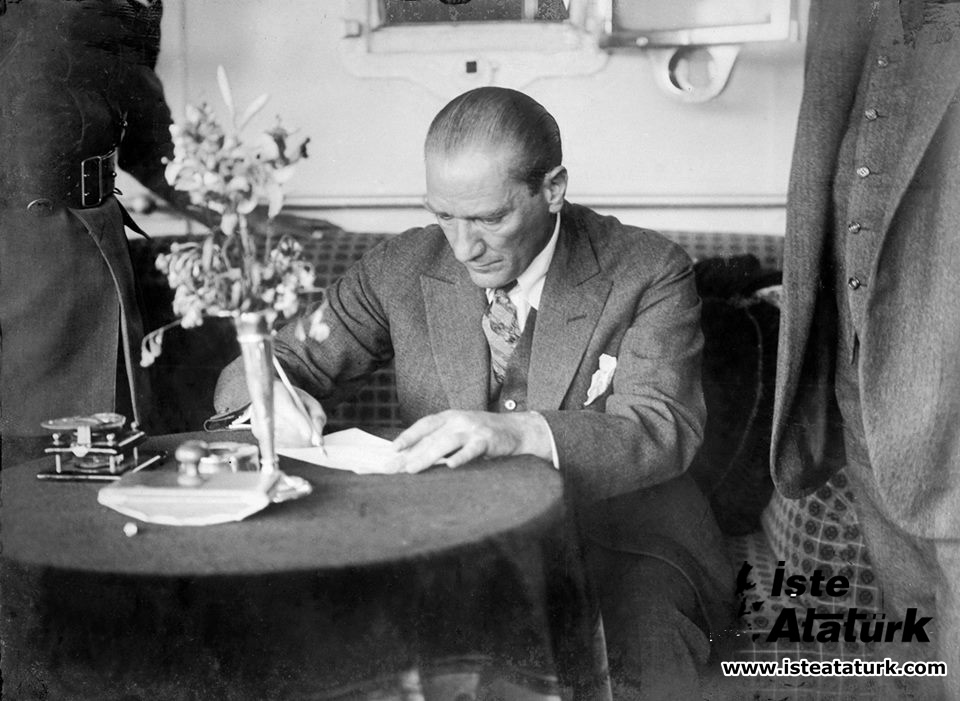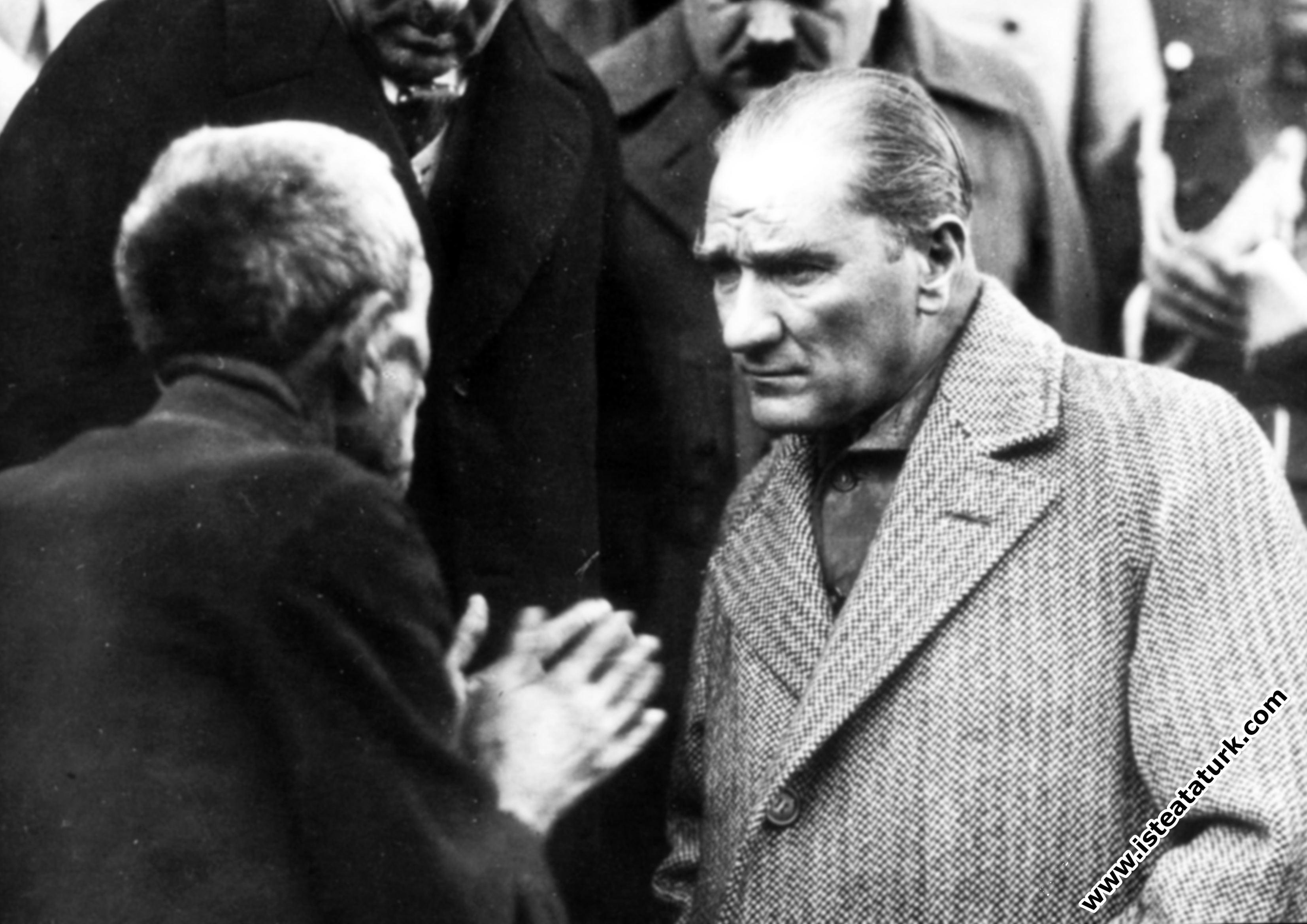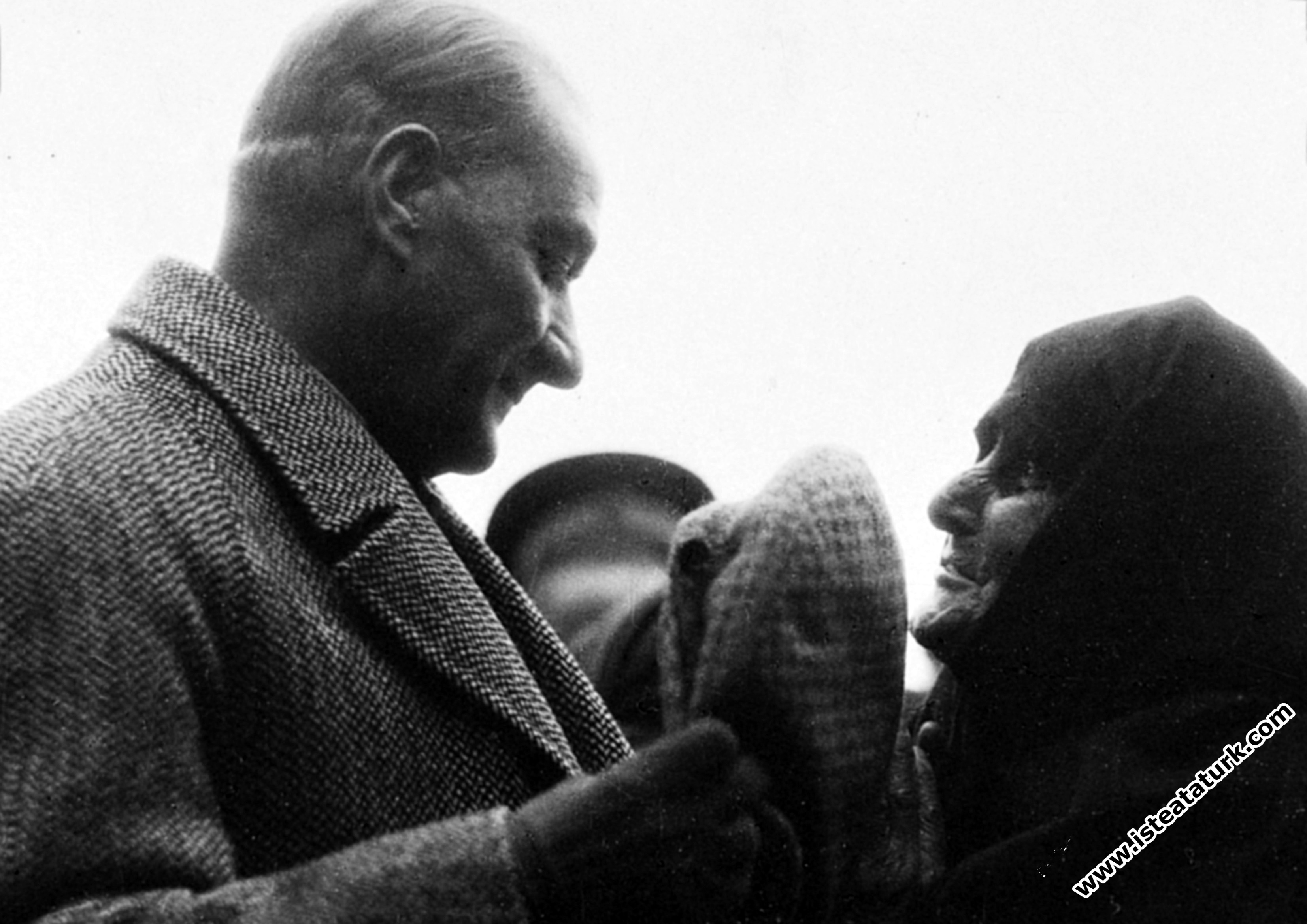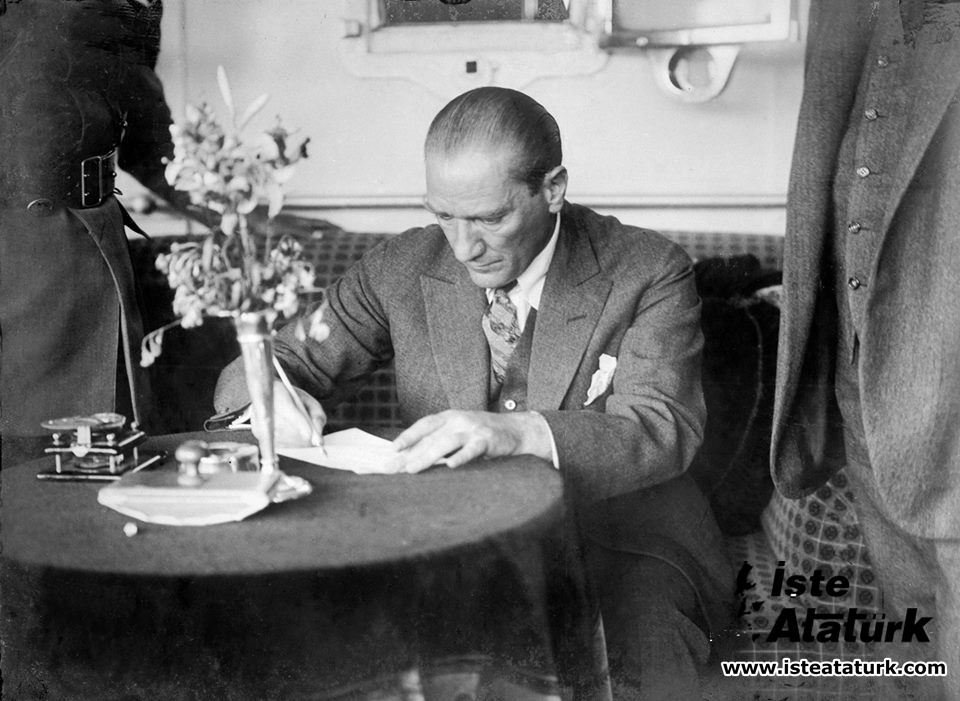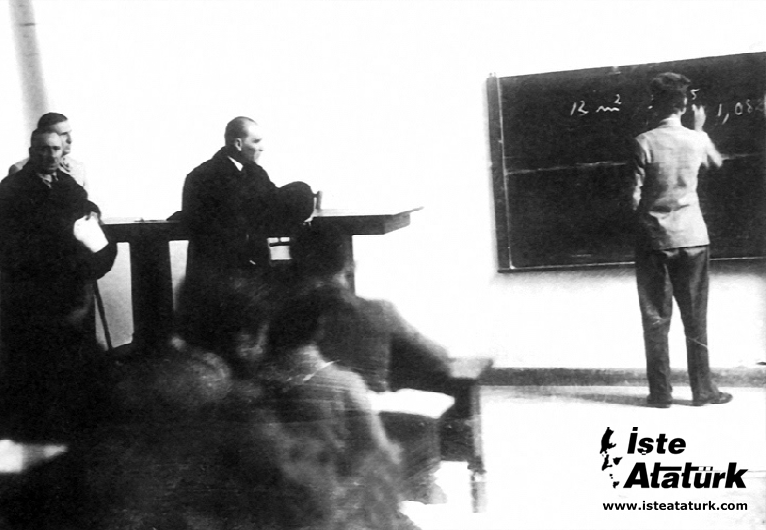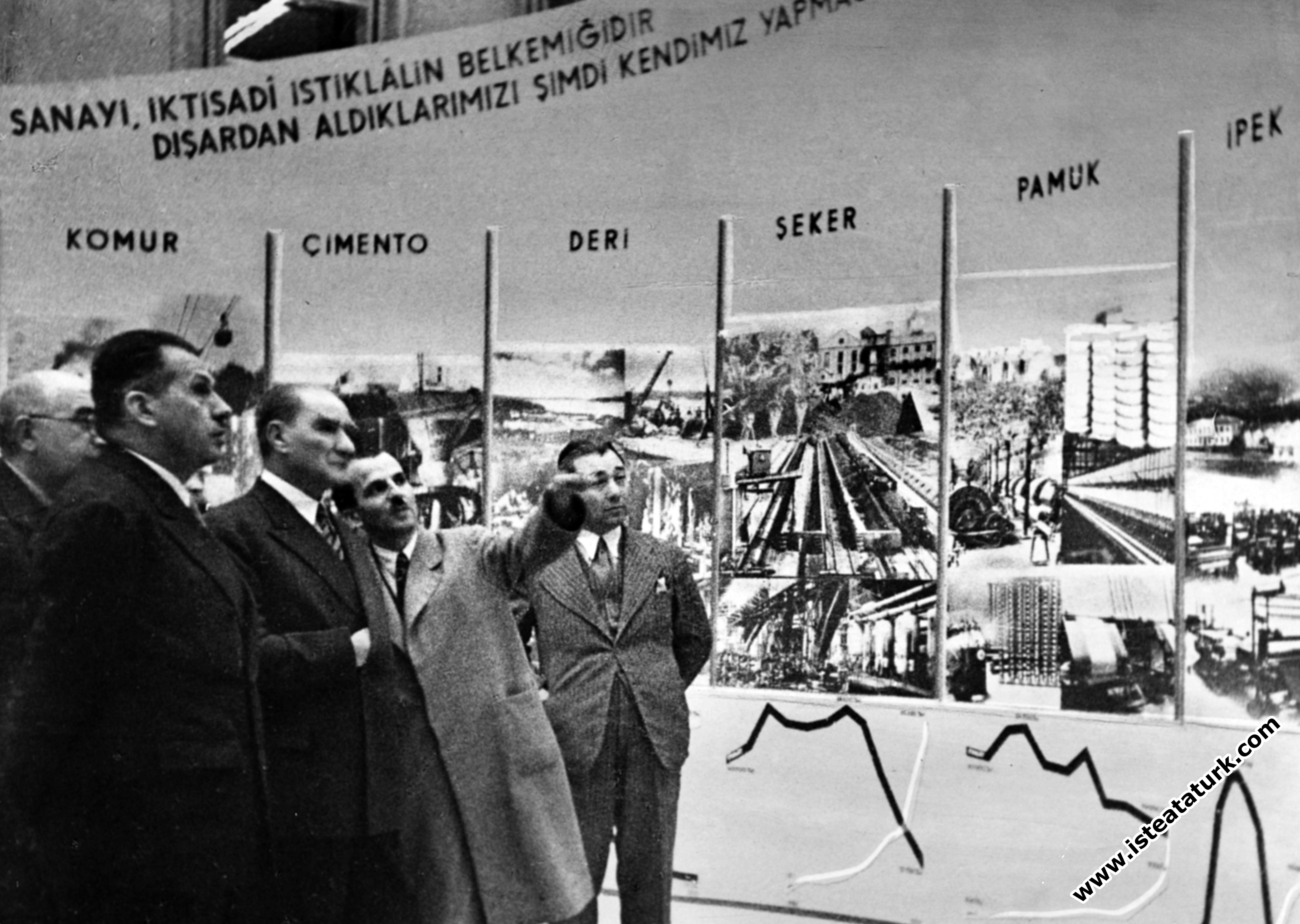
A Look at the Historical Development of Kemalist Thought
Character Size
Being a Kemalist means knowing Atatürk's basic philosophy, loving Atatürk, understanding Atatürk and believing in Atatürkism. To be sincerely proud of the values that he is proud of is to be a Republican, Nationalist, Populist, Secular, Statist and Revolutionist as he explained and aimed.
A LOOK AT THE HISTORICAL DEVELOPMENT OF ATATURKIST THOUGHT
Summary
In our article, in which we try to draw a perspective on the development of Kemalist Thought, first the currents of thought in the last days of the Ottoman Empire and the efforts for the modernization of the state are emphasized, and then their failure is explained. After mentioning the effects of these developments in forming Atatürk's thoughts and views, the formation and development of Kemalism is discussed step by step. Finally, by referring to the basic characteristics of Kemalist thought, attention was drawn to the modernizing and unifying nature of our society, and it was emphasized that the adoption of Kemalism at the individual and national level was the guarantee of the bright future of the Turkish State against deviant and conservative movements.
Entrance
Mustafa Kemal Atatürk, who provided the development of modern historiography in Turkey with his studies, incentives and establishments,1 while leading the Turkish Nation to a bright path, also had views based on certain historical foundations. Therefore, it is useful to deal with the main lines of this historical process that contributed to the formation of Kemalist thought.
When the Ottoman Empire withdrew from Vienna in 1683, it was in a superior position to the developing Western thought and institutions in terms of the ideas and institutions it represented. Thereupon, the Ottoman Empire, by accepting the superiority of Europe, would turn towards Westernization and would think that it could balance this superiority with the innovations to be made in the military field.3
Initially III. The Western influence, which showed itself in the form of “luxury and debauchery” in the Tulip Era during the reign of Ahmet (1703-1730), will continue in the field of thought with the advent of the printing press.4 However, the transformation of these influences into an act of modernization. It will be possible with the innovations made in the field of administration during the reign of Selim I (1789-1807). 1861) This situation, which became concrete with the proclamation of the Tanzimat, continued until the First World War in different forms. However, in this period, a dichotomy emerged in the State and society life, which was expressed in the terms "Turkish Alaturka" and "Alafranga", and this differentiation would only be eliminated in the Republican era.8
The modernization efforts of the Ottoman Empire in order to compile and get stronger again could not provide the expected results.9 However, the political movements that emerged in this period are important in that they allow the first examples of the modernization movement initiated by Atatürk.10 Therefore, the innovations carried out in the Ottoman Empire It can be said that despite the fact that the currents and movements that emerged to ensure this could not keep this state alive, it provided the necessary experience for the establishment of a new state.'1 This long historical development prepared Atatürk. Mustafa Kemal, with his love, will not only save the Turkish Nation from an absolute extinction, which he led with the steeled will born of thousands of years of culture,At the same time, it will open the way to rise with an independent, free and dignified life that befits him.13
It is seen that the ideas that had developed in Atatürk's mind since 1907 were put into practice after he set foot on the holy land of Anatolia on May 19, 1919. 14 Because, starting from this date, events have always been directed in the same direction and the Turkish Nation has progressed on a bright path and deserved it among the existing nations. activities have been carried out. While doing these, Atatürk determined and determined what, when and how to do it with great success.15 As a result, XX. These ideas, which brought about the Turkish revolution, which is accepted as the wonder of the 20th century, also include all the main issues, some of which have been concluded until that day.16
When Mustafa Kemal started the War of Independence, he had a certain mentality, political view and belief based on historical foundations.17 However, it can be said that his behavior was guided by developments and events rather than theoretical studies. emerges and develops. It is possible to analyze this process by dividing it into four phases, although there are no fundamental differences between them.
The Four Stages of Kemalist Thought as an Intellectual and Actual Movement
The first period of Kemalist thought between the years 1919-1938 constitutes a "formation and experimentation" stage. It is known that important studies were carried out to define and develop Kemalist thought in the CHP congresses convened in 1927, 1931 and 1935. 19 Especially in the 1935 program, Kemalism was defined as Kemalism and the principles in this section were accepted as the basis of Kemalist thought.20 In fact, these principles are It included the developments of the National Struggle period, the Revolutions and the thoughts and beliefs of Atatürk himself. In this period, the emphasis on Atatürk's personality seems to be at the forefront21, and articles dealing with Atatürk's life are published.22 In addition, in these years, it is noteworthy that there was a significant interest from foreigners to examine the Turkish revolution and therefore Atatürk's views.
Between 1939-1960, that is, in the second phase, a development in the form of "telling Atatürkism" emerges in Kemalist thought. However, later developments show that it was not very successful at this stage. It can be said that a number of developments that emerged during the period were effective in this.25 The fact that a will to prevent the abuse of such developments has not been put forward sufficiently has accelerated such a phenomenon.26
The third period covers the period between 1961 and 1980, during which many books about Atatürk were published, conferences were given, and symposiums were organized. These efforts have continued and been effective in the international arena as well.27 However, it cannot be said that all these activities went beyond the framework of “telling Atatürkism” as in the second period mentioned above.
However, Kemalism requires not only obtaining its knowledge, but also believing it and putting it into practice. Unfortunately, this second issue could not be realized and the country faced the danger of division. As stated in the preamble of the 1982 Turkish Constitution, "at the time when an unprecedented, divisive and destructive civil war in the Republican era reached the point of realization", the Turkish Army seized power on September 12, 1980, and as in everything else, a new era began in Kemalism. It was clearly stated in the first statements about the September 12 Operation that this new era had a Kemalist character and target. In fact, considering the commitment of the Turkish Army to Atatürk's principles and reforms, it is not possible to think that the operation could have a basis other than Kemalism.28
In the said period, important steps were taken especially in the direction of understanding and applying Kemalist thought. In accordance with Article 134 of the 1982 Constitution, “Atatürk Culture, Language and History Supreme Institution under the Prime Ministry, under the moral protection of Atatürk, under the supervision and support of the President” was established with the law numbered 2876. Only Atatürk Research Center, in which Atatürk Cultural Center and Atatürk Research Center, which are located within this institution, have significant activities, published 504 conferences, 4 international symposiums, 79 books and the Speech CD-ROM until 1999, in a fifteen-year period.29
Despite all well-intentioned efforts, it is undeniable that certain deviations have emerged with some forced "interpretations". Because Atatürk's extremely clear and clear thoughts, like every great man, are wanted to be abused by various groups from time to time.30 The best response to such malicious intentions will be given by the youth with Kemalist belief and idealism.31
CONCLUSION
Kemalist thought is reconsidered, explained, analyzed and interpreted in every period. This is due to its own internal dynamics. However, Kemalist thought should have been adopted by all segments of our society until today.
In fact, those who cause turmoil in Turkey on this issue, regardless of their segment, seem to have set out with the decision and intention to stifle Atatürkist thought and to put an end to the Republic of Turkey established by Atatürk. Because the aim of Kemalism is to make the Turkish Nation a modern society with a rational and scientific method in every field.
Being a Kemalist means knowing Atatürk's basic philosophy, loving Atatürk, understanding Atatürk and believing in Atatürkism. To be sincerely proud of the values that he is proud of is to be a Republican, Nationalist, Populist, Secular, Statist and Revolutionist as he explained and aimed. The day we give this belief and idealism to the youth, they will no longer condescend to any foreign ideology, they will become a person who knows their responsibilities and is useful to the Turkish Nation.
As a result, Kemalism, born out of the needs of the Turkish Nation, is a national choice and attitude that is most suitable for Turkey in order for our society to reach the level of contemporary civilization. Kemalism, as well as modernizing, has the qualities to ensure national unity. As long as we hold on to Kemalist thought, foreign ideologies and movements aiming to break up the Turkish Nation will lose their chance to spread and gain supporters. The Turkish Nation will not return to those days of pain and tears that they lived. The adoption of Kemalism individually and as a nation, and its protection against current and future deviant and conservative currents are the guarantee of the bright future of the Turkish State.
1 See. Azmi SÜSLÜ, “Atatürk and History”, Kemalist Thought Handbook, Ankara 1995, pp.265-278
2 EZ KARAL, Ottoman History I, Ankara 1988, p.55; M AYDIN “The Identity Desired by the Tanzimat”, 150th Anniversary of the Tanzimat International Symposium (Ankara 31 October - 3 November 1989), Ankara 1994, p. 15-20.
3 See. Alan PALMER, The Last Three Hundred Years of the Ottoman Empire; History of a Collapse, Istanbul 1994, p.53 et al.; Y. AKCURA, Three Styles of Politics, Ankara 1987, p.48 et al.; EZ KARAL, ibid, p. 178.
4 B. LEWIS, The Birth of Modern Turkey, (nşr. M. KIRATLI) Ankara 1984, p.51 et al.
5 S. CÖHCE, Ataturk's Principles and History of Revolution I, Elazig 1992, p.54 et al.
6 See. Tuncer BAYKARA, “II. Internal Foundations in Mahmut's Reform 1826-1839”, 150th Anniversary of the Tanzimat International Symposium, pp.263-270; A. PALMER, supra, p.104 et al.; B. LEWIS, supra, p.57 et al ; M. Emin Gerger, Turkey from the Tanzimat to the European Community, Istanbul 1989, p.82 et al.
7 For more information, see MoNE Commission, Tanzimat IH, Istanbul 1999, See also. E. KURAN, Turkish Modernization, Progress on an ordeal, Ankara 1997, p. 135 et al.
8 S. CÖHCE, a.g.e., s.96 vd.
9 A.AFETİNAN, Civil Information and M. Kemal Atatürk's Handwriting, (nşr. Azmi SÜSLÜ et al.), Ankara 2000, p.48 ff.
10 For more information, see EZKARAL, Ottoman History VIII, Ankara 1988, pp.482-568.
11 See. Bernard LEWIS, (Trans. Berin YANARDAĞ), “The Currents of Thought Preparing the Establishment of the Turkish Republic”, Atatürk Conferences VI (1973-1974), Ankara 1977, pp.15-22; See also Celal NURİ, Turkish Revolution, Istanbul 1926
12 Halil İNALCIK, “Atatürk and Turkey's Modernization”, Kemalist Thought Handbook, Ankara 1998, pp.125-132..
13 S. CÖHCE, a.g.e., s.5.
14 See. Şerif MARDİN, “The Foundations of the Dynamics of Innovation and Atatürk”, Atatürk in the Light of Contemporary Thought, Istanbul 1983, pp.21-48.
15 See. Kemal ATATÜRK, Speech I (1919-1920), Istanbul 1973, P.16: For a broad commentary on this subject, M. KAPLAN “The Reasons That Ensured Atatürk's Success: Situation, Interpretation, Target, Belief, Decision and Action”, İ. Ü.EF A Gift to Atatürk on the 100th Anniversary of His Birth, Istanbul 1981, p.22 et al.; See also Hamza EROĞLU, “Atatürk and the Republic”, Kemalist Thought Handbook, Ankara 1998, p. 15-33.
16 See. P.«GENT1ZON, Mustafa Kemal and Uyanan Doğu, Ankara 1983; E. Ziya KARAL, “The Nature and Importance of the Turkish Revolution” İ.Ü.EF History Seminar Journal I, Istanbul 1937, pp.128-143.
17 See also I. KAFESOGLU-M. SARAY, Atatürk's Principles and Historical Foundations, Istanbul 1983; B. Sıtkı BAYKAL, “Historical Meaning of Our Republic”, Kemalist Thought, Ankara 1992, pp.243-263; S. IRMAK, “Principles of Atatürkism- Idea Foundations of Revolutions”, Kemalist Thought, Ankara 1992, pp.1-34.
18 Suna KİLİ, “The Essence and Formation of Kemalism in terms of History” Atatürk Revolutions I. International Symposium Proceedings (Istanbul, 10-14 December 1973), Istanbul 1975, pp.22-32.
19 See. Hakkı UYAR, Single Party Period and the Republican People's Party, Istanbul 1998.
20 Examples of the reinforcement of Kemalism are frequently seen in the newspaper articles of this period. Muhittin BIRGIN, “Lonely Kemalism”, Son Posta, April 20, 1938, After the author mentions the boiling point of Nazism in Hungary, he says, "Democracy, communism or Nazism in the middle, these on the one hand express a philosophy of life and an order of life... Both communism, democracy, nazism or fascism, as theory, philosophy of life and social order, can only be the product of the conditions in the countries they were born in, and they remain only as imitations and foreign theories for the countries in which they were not born. When the same "isms" are considered as politics, they represent not only imitation and alienation, but perhaps also a danger for other countries.... On our own terms, Inspired by our own needs, our departure today is a Turkish departure. Even if our shortcomings are great, we are not zealous and hopeless. To live as a Turk, these two forces alone are enough for us; Let's keep our eyes peeled: neither the Tanzimatist democracy, nor the fanciful communism, nor the other "isms" that represent a new egoism under the name of realism. Only Kemalism!” and summarizes the general approach of the period.
21 For example, on the occasion of the anniversary of Atatürk's arrival in Antalya in 1938, a large ceremony was held at the People's House and conferences were held on "Atatürk's military and political genius and high presence." See. Date of the Month, April 1938, p.52, p.4.
22 The articles titled “Holy Gun” by Afet İNAN and “Vatan ve Hürriyet, İttihat Terakki” by Hüsrev Sami KIZILDOĞAN in the 3rd and 4th issues of Belleten, published by the Turkish Historical Society, published on March 17, 1938, Atatürk He was dealing with his life.
23 For example, the English writer Herbert Side BOTHAN came to Turkey to examine the Turkish Revolution, and then published it in the Sunday Times with the title “The Story of the Revival of a Nation, Atatürk's Politics of Peace” with the signature of Serutator. This article was translated into Turkish and published in Ulus Newspaper, 14 January 1938, with the title “Atatürk Can Be a Model for Us”; Also, in the 32-page Turkey Special Supplement given by The Times dated August 9, 1938, the Turkish revolution and Atatürk were praised. See. Date of the Month, August 1938, p.57, p.314 et al.
24 Referring to the article by the German Fons Panevon Mens in the Westdeutscher Beobachter Newspaper, cf. “Impressions of a Traveller” History of the Month, March 1938, p.51, p.355 et al.; See also Rom LANDEN, “Kemalizm” Ulus Newspaper, 17 March 1938.
25 For a political evaluation of this period, see. Sait AŞGIN, Public Expenditures in Eastern Anatolia (1946-1960), Ankara 2000, p.19 et al.
26 For an evaluation of the Republican Period after Atatürk, see. B. LEWIS, The Birth of Modern Turkey (nşr. M. KIRATLI), Ankara 1984, p.293 et al.; For an evaluation of the not-benevolent approaches to the Atatürk and National Chief periods during the Democratic Party's rule, see. Hüseyin Cahit YALÇIN, “Atatürk Era”, Ulus Newspaper, November 22, 1953. In this article, the author states that “a lot of low-level, characterless, worthless creatures crawled on the ground in front of Atatürk and then in front of the National Chief İsmet İnönü, and now they have changed their skin like snakes, Some of them are covered with the paint of Democrats, they are after 25 years of history, insulting Atatürk and İsmet İnönü, and they are trying to rise by showing enmity”. They wore the mask of Democrats and did not deign to crawl in places like themselves, were disgusted by contact with them, and were greedy to gain wealth and wealth by slandering the people of honor and dignity. This is the truth of Atatürk's era and his hostility towards Atatürk," and he attributes such developments to lowly searches for power and prosperity.
27 UNESCO Executive Board, with its decision dated 17 October 1979, decided to convene Atatürk's 100th Anniversary International Symposium in Paris and to allocate funds for it. See. 1. GİRİTLİ, Kemalist Ideology, Political and Economic Aspects, Ankara 1981, p. 6: For such a study, see. Turkish National Commission for UNESCO, Atatürk, Ankara 1963.
28 İsmet GİRİTLİ, ibid, p.11.
29 See. Commission, 15 Years of Atatürk Research Center, Ankara 1999.
30 See. Aydın TANERİ, Definition of Kemalism, Ankara 1983, p. 14 et al.
31 Since the 1990s, especially the second half, included a very close period and the definitive results of this phase were not obtained, it seems appropriate to exclude such a history study.
Assoc. Dr. Sait Asgin*
* Deputy Governor of Karaman Atatürk Research Center Communications Former Member
Source: ATATÜRK ARAŞTIRMA MERKEZİ DERGİSİ, Sayı 49, Cilt: XVII, Mart 2001
